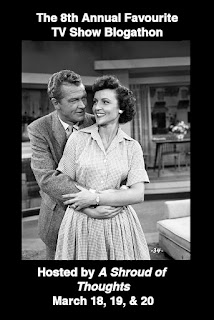Athos, Aramis, and Porthos walk into a bar --- the Coq d'Or. And are lost to the rest of the picture.
There is no site in all Paris more popular for the settling of disputes than the tavern Coq d'Or on the Rue Pigalle.
The three intrepid musketeers and BFFs played by Douglass Dumbrille, John "Dusty" King, and Russell Hicks have separately arrived at the notorious tavern to settle scores with a young upstart, new to Paris. D'Artagnan, played by Don Ameche, has this very day arrived in the big city from Gascony. The young man is filled with confidence and the skill to back it up. He has a winning smile and a song in his heart.
Don Ameche, our lovable and headstrong D'Artagnan
Yes, a song in his heart! The song is Voila and this 1939 version of Alexandre Dumas' classic adventure tale is a comedy/musical spoof from Twentieth Century Fox under the sure direction of veteran Canadian-born director Allan Dwan. Mr. Dwan was awarded the Los Angeles Film Critics Association Career Achieve Award in 1976.
The production values which have lent a timelessness to many of the studio's literary adaptations are present in the design by David Hall, costumes by Royer, the set decorations by Thomas Little, and Peverell Marley's cinematography. The perfect cinematic backdrop allows the audience to sit back and enjoy the laughter and song.
The production values which have lent a timelessness to many of the studio's literary adaptations are present in the design by David Hall, costumes by Royer, the set decorations by Thomas Little, and Peverell Marley's cinematography. The perfect cinematic backdrop allows the audience to sit back and enjoy the laughter and song.
Al, Harry, and Jimmy Ritz
I sort the Ritz lads by following the rule of Harry being in the middle and, being the eldest, Al must be the shortest, and that leaves Jimmy. Someone tell me a better way.
These musketeers are a combative lot, hence the haste to show up the young upstart from Gascony. Awaiting D'Artagnan's arrival at the Coq d'Or, Athos, Aramis, and Porthos decide to have some sport with the three lackeys employed at the tavern. A drinking game, however, finds the three musketeers knocked out for the duration of our tale while Al, Jimmy, and Harry Ritz goof off in the official uniform of the King's Musketeers. A recent spate of brawling by those in uniform has also led to the following royal edict. Oh-oh!
By Order of the King
From this date, any person discovered garbed in the uniform of the King's Musketeers without due authority, shall be subject to the Penalty of Death.
April 20, 1625
Fighting naturally ensues when soldiers of Cardinal Richelieu meet up with the bogus musketeers at the tavern. Joining in the fray with who he considers are genuine fellow musketeers is the impetuous D'Artagnan. Thus, a bond of friendship and self-preservation is formed among the four.
Pauline Moore and Don Ameche as Lady Constance and D'Artagnan
The love song of Lady Constance and D'Artagnan, My Lady by Samuel Pokrass and Walter Bullock is played instrumentally throughout the score and reprised charmingly by our leading man in the movie.
The Three Musketeers follows the popular plotline from the novel of royal intrigue and romance from this point. Queen Anne played by Gloria Stuart makes the mistake of offering one of her famous jewels as a memento to the besotted Duke of Buckingham played by Lester Matthews.
A spy played by John Carradine relays the information to the ambitious Cardinal Richelieu played by Miles Mander. The Cardinal impresses upon King Louis XIII played by Joseph Schildkraught that the Queen must wear the jewel, a gift from the people of France, at an upcoming event to prove her fidelity. D'Artagnan has fallen in love with the Queen's loyal lady-in-waiting, Lady Constance played by Pauline Moore. He, and most certainly his new-found musketeer companions, vow to retrieve the incriminating brooch.
Gloria Stuart, Pauline Moore
A spy played by John Carradine relays the information to the ambitious Cardinal Richelieu played by Miles Mander. The Cardinal impresses upon King Louis XIII played by Joseph Schildkraught that the Queen must wear the jewel, a gift from the people of France, at an upcoming event to prove her fidelity. D'Artagnan has fallen in love with the Queen's loyal lady-in-waiting, Lady Constance played by Pauline Moore. He, and most certainly his new-found musketeer companions, vow to retrieve the incriminating brooch.
Binnie Barnes as Milady de Winter vs. the whirlwind that is The Ritz Brothers
Lionel Atwill as the villainous de Rochefort has a secret weapon in the glamorous Milady de Winter played by Binnie Barnes. The race is on to steal the jewel back from Buckingham and bring it to the Queen to stop a war or to Richelieu and disorder.
The derring-do/stunts in The Three Musketeers are as exciting as any filmic adventure. There are humorous delights to be found in Don Ameche's ebullient characterization and in the Ritz Brothers antics and dance number. So much sly fun is packed into its 73-minute runtime that one might wish for just a few minutes more. I would plan a delightful weekend double bill around this charmer and The Court Jester.









































